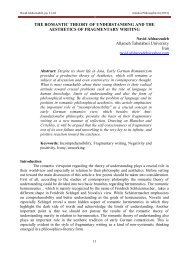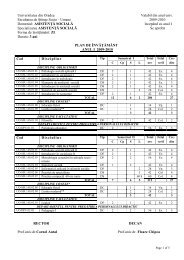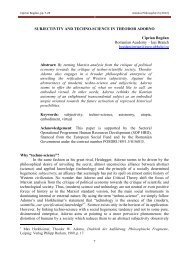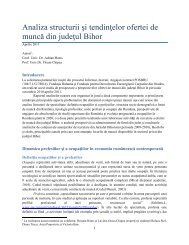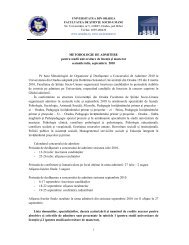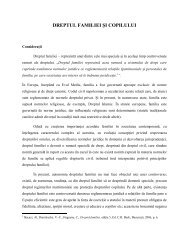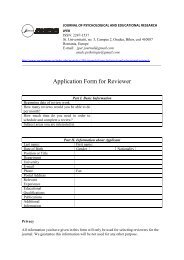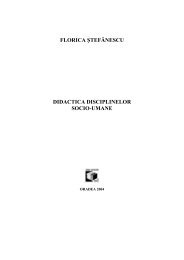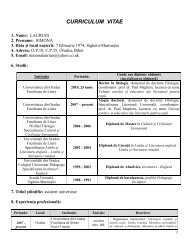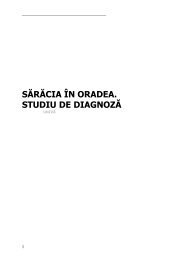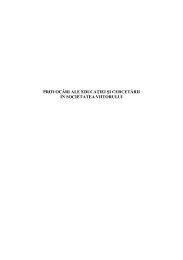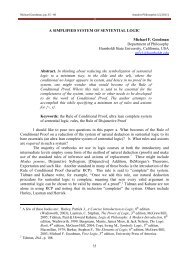Stephan Käufer: HEIDEGGER ON MINENESS AND MEMORY
Stephan Käufer: HEIDEGGER ON MINENESS AND MEMORY
Stephan Käufer: HEIDEGGER ON MINENESS AND MEMORY
Create successful ePaper yourself
Turn your PDF publications into a flip-book with our unique Google optimized e-Paper software.
Annales Philosophici 2 (2011) <strong>Stephan</strong> <strong>Käufer</strong>, pp. 51 - 65<br />
present to my surroundings, to be ahead of oneself in future<br />
projects (2008, p. 85f).<br />
Gallagher and Zahavi fit historicality, or historicity, into their framework for<br />
conceiving of human life as occurring over a succession of experiences. Hence historicity, for<br />
them, is a kind of subterranean memory and Dasein‘s extendedness, or ―stretch,‖ consists of<br />
the continuing influence of past experiences on present experience and intended future goals.<br />
An example of our historicity, according to them, is an impairment of our source memory: I<br />
see a headline about Being and Time being a work of Nazi propaganda in the New York Times,<br />
then I forget where I read this, or even that I read this, but I find myself with an aversion to<br />
this book.<br />
This reading goes against the grain of Heidegger‘s basic argument. Note that on this<br />
Gallagher/Zahavi view, the extendedness Heidegger talks about in the historicity chapter<br />
derives from the self‘s ability to unify diachronic experience by means of memory.<br />
Heidegger, however, asserts the opposite of this. Extendedness is supposed to explain how<br />
the ―connectedness of life,‖ including the unity of diachronically distinct experiences, is<br />
possible in the first place.<br />
Dasein does not first fill up a somehow occurrent track or stretch<br />
[Strecke] ―of life‖ with the phases of its momentary reality, but it<br />
extends [erstreckt] itself in such a way that its own being is already<br />
constituted as extendedness [Erstreckung] (SZ, p. 374). 6<br />
This needs to be explained.<br />
To frame his question Heidegger introduces the semi-technical notion of ―birth‖. It is<br />
a semi-technical notion because, on the one hand, Heidegger does not use it with its ordinary<br />
meaning. He uses it in a sense that reflects his use of ―death‖ as a particular feature of<br />
existence (your ownmost, non-relational possibility that never ceases to be relevant); and just<br />
like ―death,‖ Heidegger wants to take advantage of the ordinary connotations of the word<br />
while also maintaining that he is not literally talking about birth. He makes this clear enough<br />
by saying, for example:<br />
Understood existentially, birth is never something past in the sense<br />
of a no longer occurrent thing, just as death does not have the<br />
mode of being of something that has not yet occurred and is<br />
impending. Factical Dasein exists as born (gebürtig) and as born<br />
(gebürtig) it also already dies, in the sense of being-towards death<br />
(SZ, p. 374). 7<br />
On the other hand, Heidegger does not provide a detailed phenomenological<br />
interpretation of this existential notion of birth. He uses the word a few times in §72 (pp. 373,<br />
374) to worry about the notion of a continuous expanse from birth to death, and then again in<br />
§74 (p. 390) when he answers that worry in terms of Dasein‘s extended constancy. In<br />
6 Heidegger‘s ironic use of füllt…auf might indicate that one of his proximal targets here is Husserl.<br />
7 In German we say Ich bin gebürtiger Hamburger (cf. ―German-born‖ or ―natural-born‖), which has<br />
Heidegger‘s intended connotation of having been born and (therefore) continuing to be<br />
as.<br />
54



